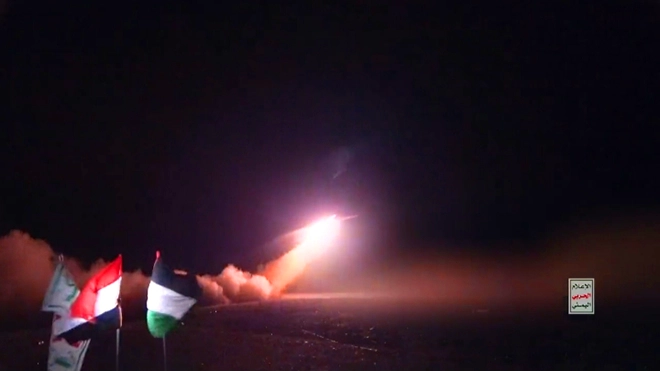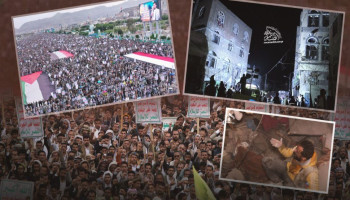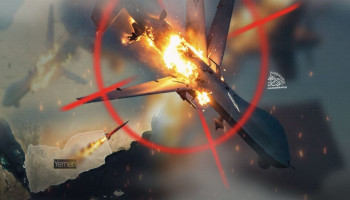An Arabic report confirms that the "Zionist occupation entity is subjected to almost daily military strikes since Yemen officially announced its engagement in the war alongside the Palestinian resistance in Gaza against the Zionist entity and its crimes. Israeli security officials had been trying to hide the resulting destruction until it was revealed by Hebrew and Western media.
The report, issued by the news site “Al-Khandaq”, states that “the arrival of Yemeni drones and missiles to the occupied interior is the most dangerous knot; due to its potential impact on a number of other geostrategic points, such as “Bab al-Mandab” and the Red Sea”.
The report points out that “the importance of Yemeni strikes lies in the fact that this is the first battle in which the Yemeni armed forces test their weapons using their maximum range, and with a challenge that lies in overcoming a large number of American air defenses owned by Saudi Arabia, Egypt, and Jordan, who participated in repelling the Yemeni missiles and drones. Therefore, it is a suitable opportunity to discover the effectiveness of these weapons in relation to weaknesses and strengths, in preparation for the major battle”.
The report noted that "Yemen’s participation in the operations of the ‘Al-Aqsa Flood’ enhances its regional role; during the October War of 1973, the occupation entity was subjected to the first naval blockade in its history, after Yemen carried out a naval closure operation in front of Israeli ships and those supporting it in Bab al-Mandab, more than half a million kilometers between the Red Sea and the Mediterranean Sea were within the operational cover during that period, where more than 200 ships were intercepted and inspected, including American warships (Charles Adams) between the islands of “Brim” and “Jabal al-Tair”.
The site “Al-Khandaq” added: “Today, after more than 50 years, this tragedy that they were exposed to returns to the minds of Israeli officials, with a tangible difference, represented by the targeting of Yemeni missiles deep into the entity, for the first time in history, under a political leadership headed by the Sayyid Abdul Malik Al-Houthi, who adopts the operation and promises more despite the stream of American threats coming through the Sultanate of Oman”.
The report highlights that Sanaa’s alliance with the Palestinian resistance against Israel could reshape the Saudi-Israeli normalization agreement. The Saudi Crown Prince, eager to impose conditions that would increase American protection, is finding that the U.S. administration can no longer meet his ambitious expectations.
In response, missiles launched from Saudi territory could heavily impact Mohammed bin Salman when normalization talks resume. This also applies to Saudi Arabia’s predicament if Yemen perceives the Saudi air defenses shooting down their missiles and drones as an attack, and therefore decides to respond in kind.
A member of the political bureau in the Ansar Allah movement, Mohammed Al-Bukhaiti, expressed his views on the “X” platform. He said, “We did not anticipate that striking deep into Israel would alarm the leadership in Saudi Arabia and the Emirates more than hitting Riyadh and Abu Dhabi.”
The report further elaborates that the strikes reaching Eilat, the closest point for Yemen to target, serve a strategic purpose. This is part of a battle plan agreed upon by the resistance movements. Their primary aim is to convey a message to the settlers that no place on the Palestinian map is safe for them.
This comes after the settlers assumed that fleeing to Eilat from the settlements of the Gaza envelope would offer them protection from the strikes. However, these strikes are expected to trigger large waves of migration.
In fact, the Hebrew media has already started reporting on this migration. They estimate that about 250,000 settlers, including major businessmen, have migrated since the onset of the war on Gaza.
The report indicates that the American military presence in the region has become a concern. This concern is resonating within the corridors of the White House. The level of concern escalates with the increase in the number of resistance attacks.
The American forces oversee operations in Yemen. The leadership of the Special Operations Command Central Forward, often abbreviated as SOCCENT FWD or SFY, is a key element in this process. This command is based in Tampa.







